Chao Gong
DuMo: Dual Encoder Modulation Network for Precise Concept Erasure
Jan 02, 2025



Abstract:The exceptional generative capability of text-to-image models has raised substantial safety concerns regarding the generation of Not-Safe-For-Work (NSFW) content and potential copyright infringement. To address these concerns, previous methods safeguard the models by eliminating inappropriate concepts. Nonetheless, these models alter the parameters of the backbone network and exert considerable influences on the structural (low-frequency) components of the image, which undermines the model's ability to retain non-target concepts. In this work, we propose our Dual encoder Modulation network (DuMo), which achieves precise erasure of inappropriate target concepts with minimum impairment to non-target concepts. In contrast to previous methods, DuMo employs the Eraser with PRior Knowledge (EPR) module which modifies the skip connection features of the U-NET and primarily achieves concept erasure on details (high-frequency) components of the image. To minimize the damage to non-target concepts during erasure, the parameters of the backbone U-NET are frozen and the prior knowledge from the original skip connection features is introduced to the erasure process. Meanwhile, the phenomenon is observed that distinct erasing preferences for the image structure and details are demonstrated by the EPR at different timesteps and layers. Therefore, we adopt a novel Time-Layer MOdulation process (TLMO) that adjusts the erasure scale of EPR module's outputs across different layers and timesteps, automatically balancing the erasure effects and model's generative ability. Our method achieves state-of-the-art performance on Explicit Content Erasure, Cartoon Concept Removal and Artistic Style Erasure, clearly outperforming alternative methods. Code is available at https://github.com/Maplebb/DuMo
Reliable and Efficient Concept Erasure of Text-to-Image Diffusion Models
Jul 17, 2024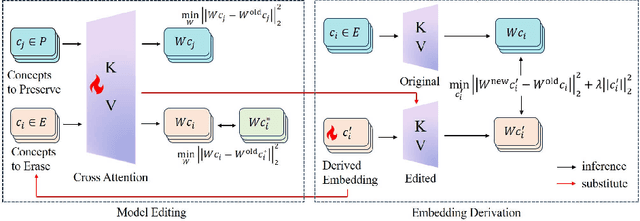
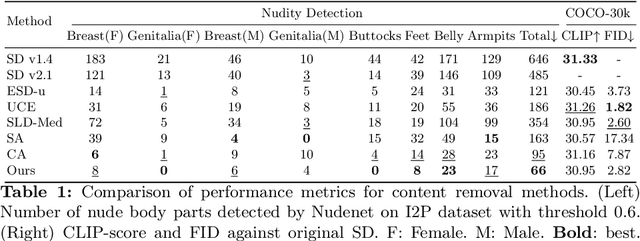
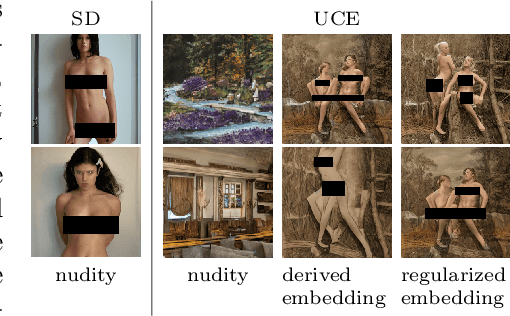

Abstract:Text-to-image models encounter safety issues, including concerns related to copyright and Not-Safe-For-Work (NSFW) content. Despite several methods have been proposed for erasing inappropriate concepts from diffusion models, they often exhibit incomplete erasure, consume a lot of computing resources, and inadvertently damage generation ability. In this work, we introduce Reliable and Efficient Concept Erasure (RECE), a novel approach that modifies the model in 3 seconds without necessitating additional fine-tuning. Specifically, RECE efficiently leverages a closed-form solution to derive new target embeddings, which are capable of regenerating erased concepts within the unlearned model. To mitigate inappropriate content potentially represented by derived embeddings, RECE further aligns them with harmless concepts in cross-attention layers. The derivation and erasure of new representation embeddings are conducted iteratively to achieve a thorough erasure of inappropriate concepts. Besides, to preserve the model's generation ability, RECE introduces an additional regularization term during the derivation process, resulting in minimizing the impact on unrelated concepts during the erasure process. All the processes above are in closed-form, guaranteeing extremely efficient erasure in only 3 seconds. Benchmarking against previous approaches, our method achieves more efficient and thorough erasure with minor damage to original generation ability and demonstrates enhanced robustness against red-teaming tools. Code is available at \url{https://github.com/CharlesGong12/RECE}.
A Comprehensive Capability Analysis of GPT-3 and GPT-3.5 Series Models
Mar 18, 2023
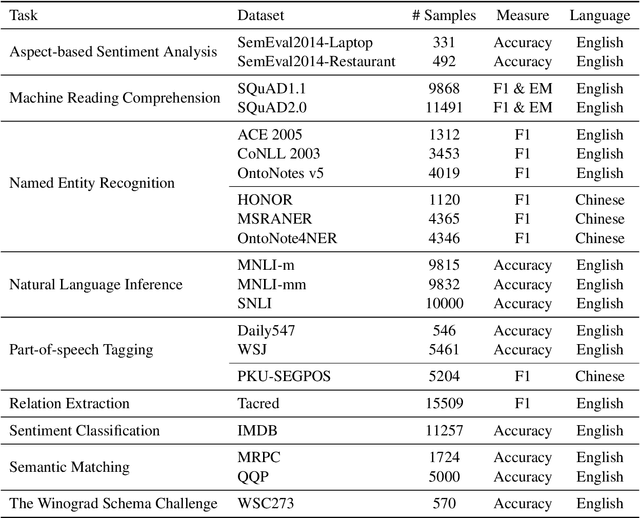
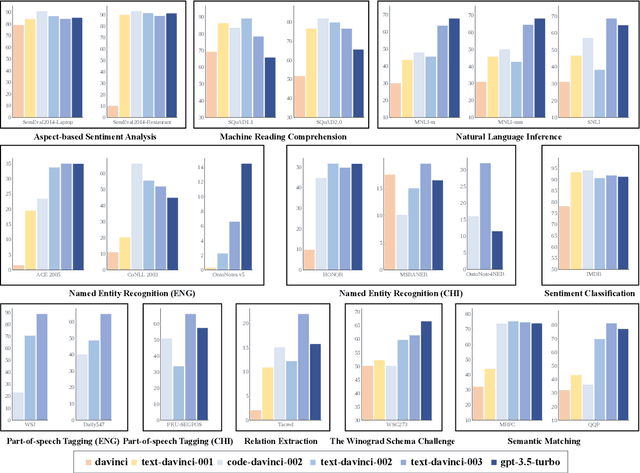
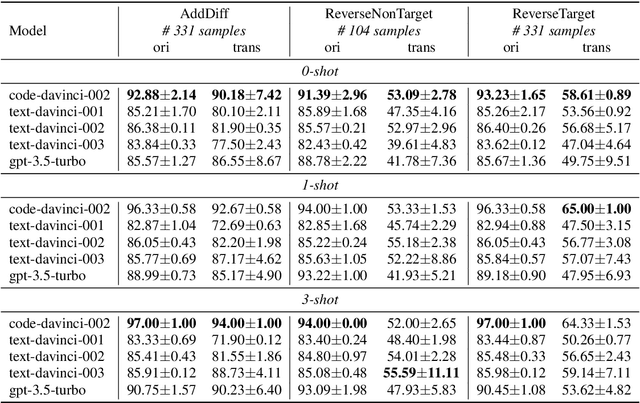
Abstract:GPT series models, such as GPT-3, CodeX, InstructGPT, ChatGPT, and so on, have gained considerable attention due to their exceptional natural language processing capabilities. However, despite the abundance of research on the difference in capabilities between GPT series models and fine-tuned models, there has been limited attention given to the evolution of GPT series models' capabilities over time. To conduct a comprehensive analysis of the capabilities of GPT series models, we select six representative models, comprising two GPT-3 series models (i.e., davinci and text-davinci-001) and four GPT-3.5 series models (i.e., code-davinci-002, text-davinci-002, text-davinci-003, and gpt-3.5-turbo). We evaluate their performance on nine natural language understanding (NLU) tasks using 21 datasets. In particular, we compare the performance and robustness of different models for each task under zero-shot and few-shot scenarios. Our extensive experiments reveal that the overall ability of GPT series models on NLU tasks does not increase gradually as the models evolve, especially with the introduction of the RLHF training strategy. While this strategy enhances the models' ability to generate human-like responses, it also compromises their ability to solve some tasks. Furthermore, our findings indicate that there is still room for improvement in areas such as model robustness.
 Add to Chrome
Add to Chrome Add to Firefox
Add to Firefox Add to Edge
Add to Edge